Abstract
The question of whether the carotid sinus baroreceptors modulate myocardial performance remains controversial. Several studies that have stressed their importance have been criticized because the possible role of cerebral ischemia and of other important variables was not eliminated. To reinvestigate this problem, we studied 21 dogs placed on total cardiopulmonary bypass. In each of these animals the carotid sinus regions were isolated and perfused with fully oxygenated blood at a constant flow rate; perfusion pressure was changed by varying the resistance to outflow from the isolated segments. Several indices of myocardial performance were assessed: right and left ventricular contractile force with Walton-Brodie strain gauge arches; the maximal rate of change in contractile force, dF/dt; the pressure developed within an isovolumic balloon inserted into the left ventricle; and the maximal rate of change of this pressure, dP/dt. When the pressure distending the carotid sinuses was raised from an average value of 34.1 ±2.8 (SEM) mm Hg to 190.1 ±4.7 mm Hg, right ventricular contractile force fell 14.9 ±2.3% (P < 0.001); right ventricular dF/dt decreased 16.7 ±3.0% (P < 0.01); left ventricular contractile force declined 14.9 ±3.3% (P < 0.01); left ventricular dF/dt fell 19.3 ±4.0% (P < 0.01); peak systolic pressure in the isovolumic balloon declined 18.2 ±3.7% (P < 0.001); and dP/dt decreased 34.1 ±4.0% (P < 0.01). Prior adrenalectomy and vagotomy and maintenance of heart rate at a constant level did not influence these results. The inverse relation between carotid sinus perfusion pressure and the indices of contractility that was observed in this investigation strongly suggests that the carotid sinus baroreceptors are an important regulatory mechanism in the control of myocardial performance.
Full text
PDF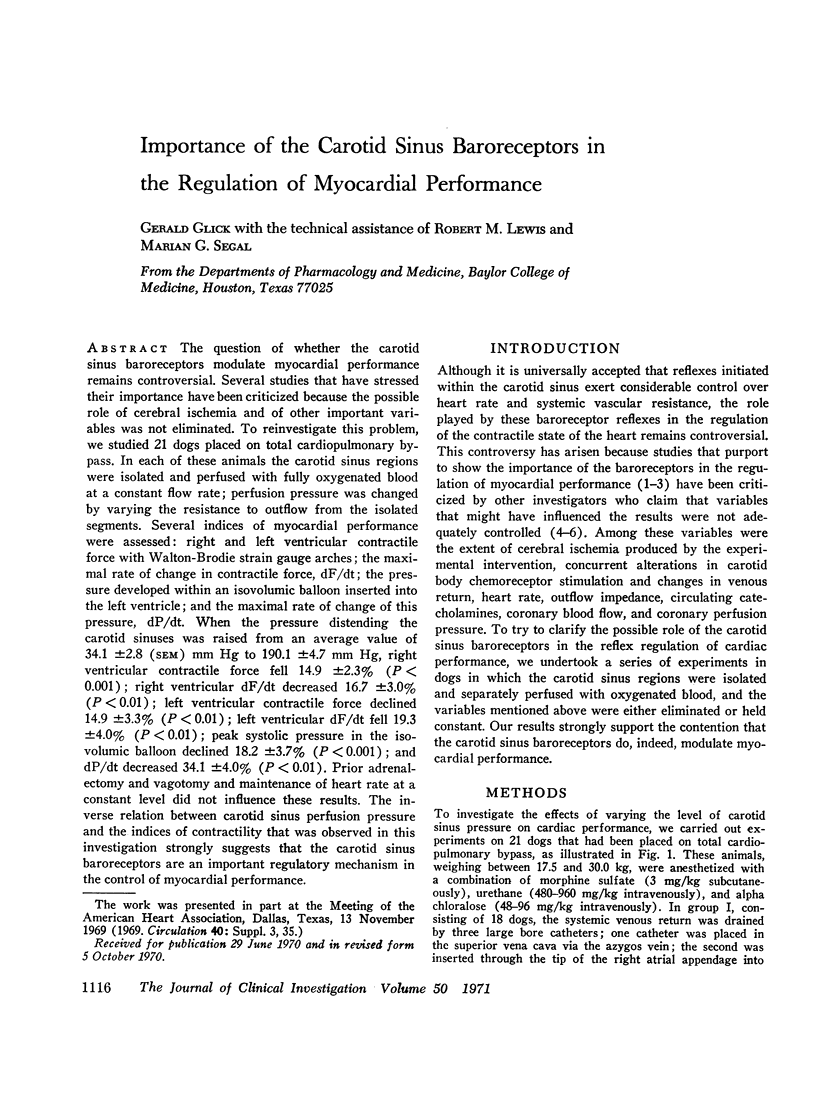
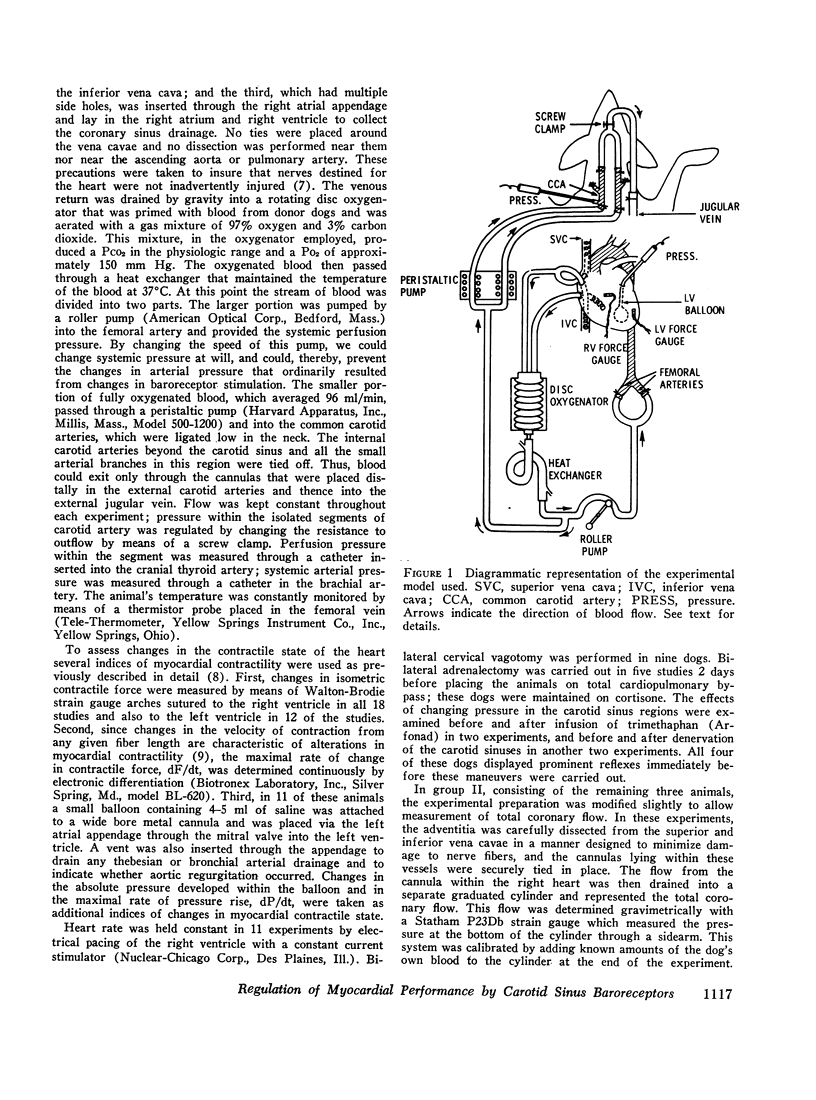
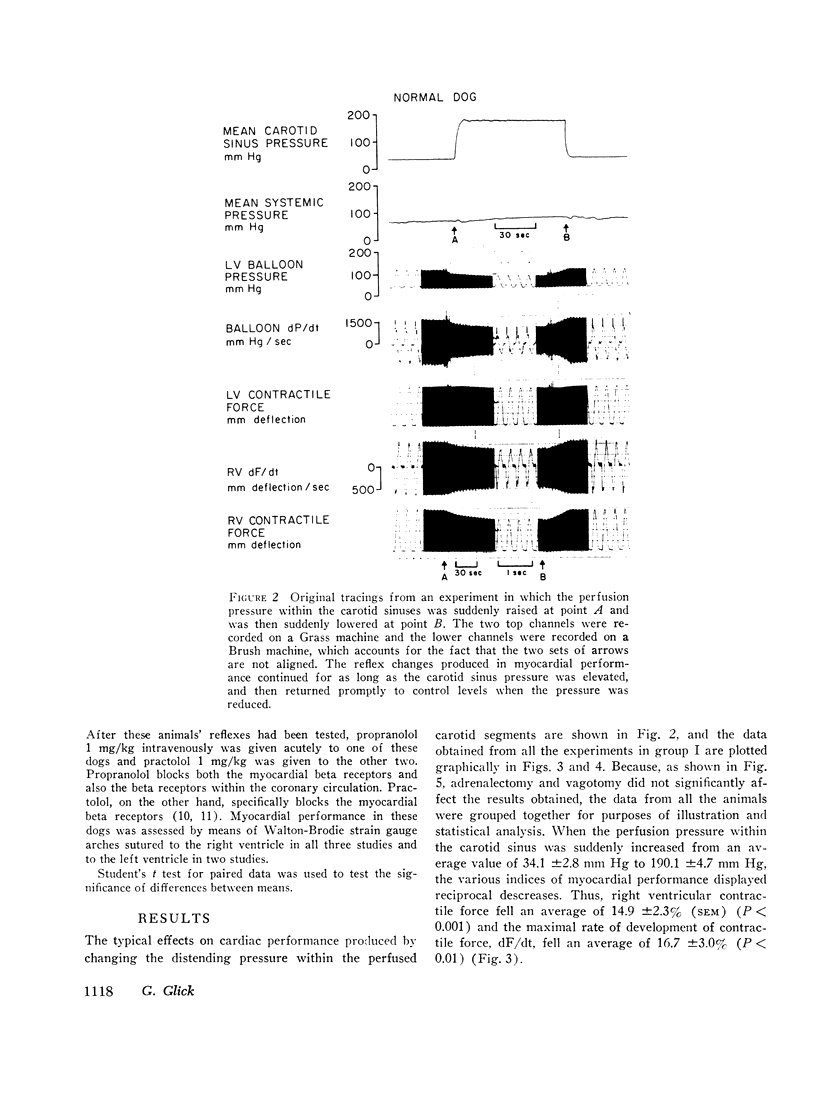
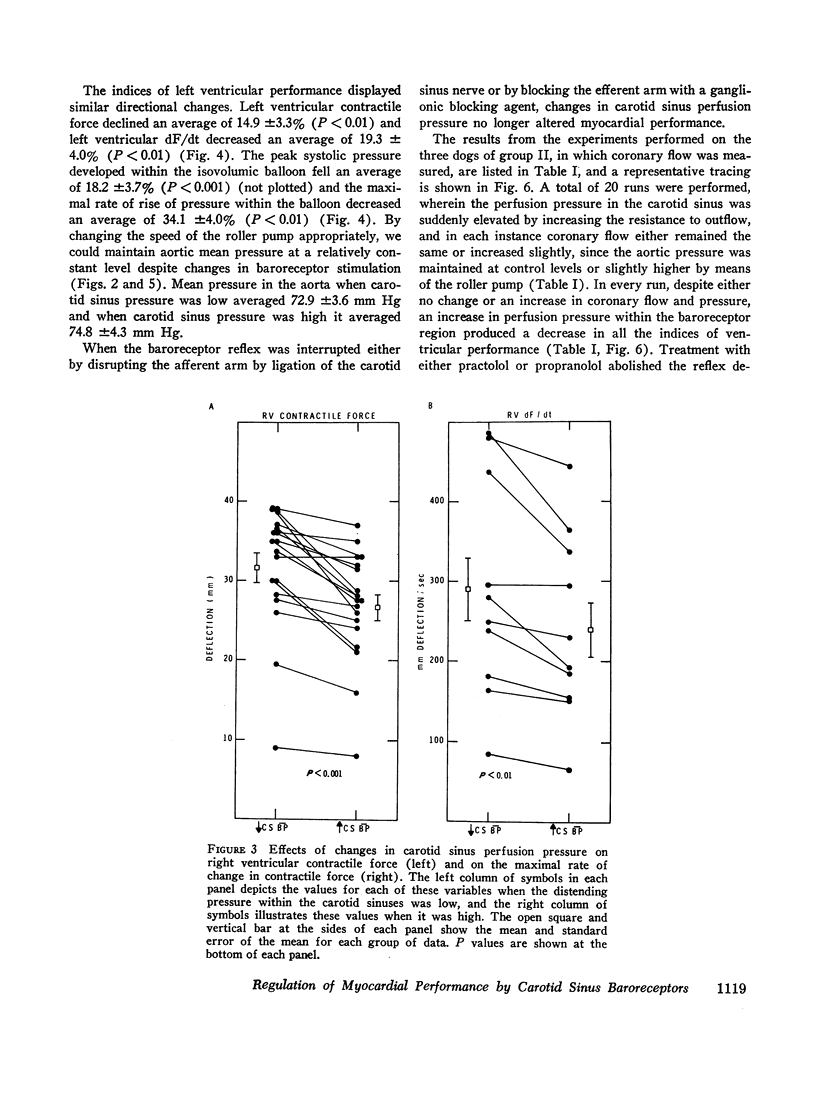
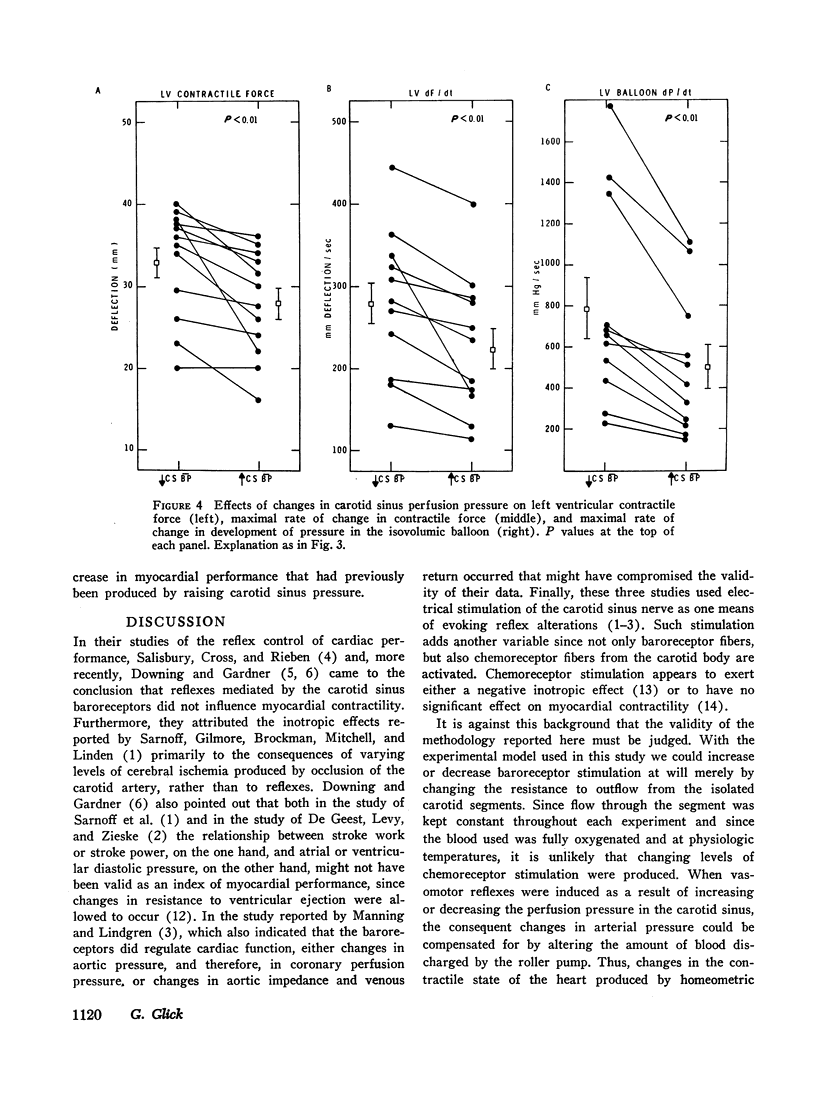
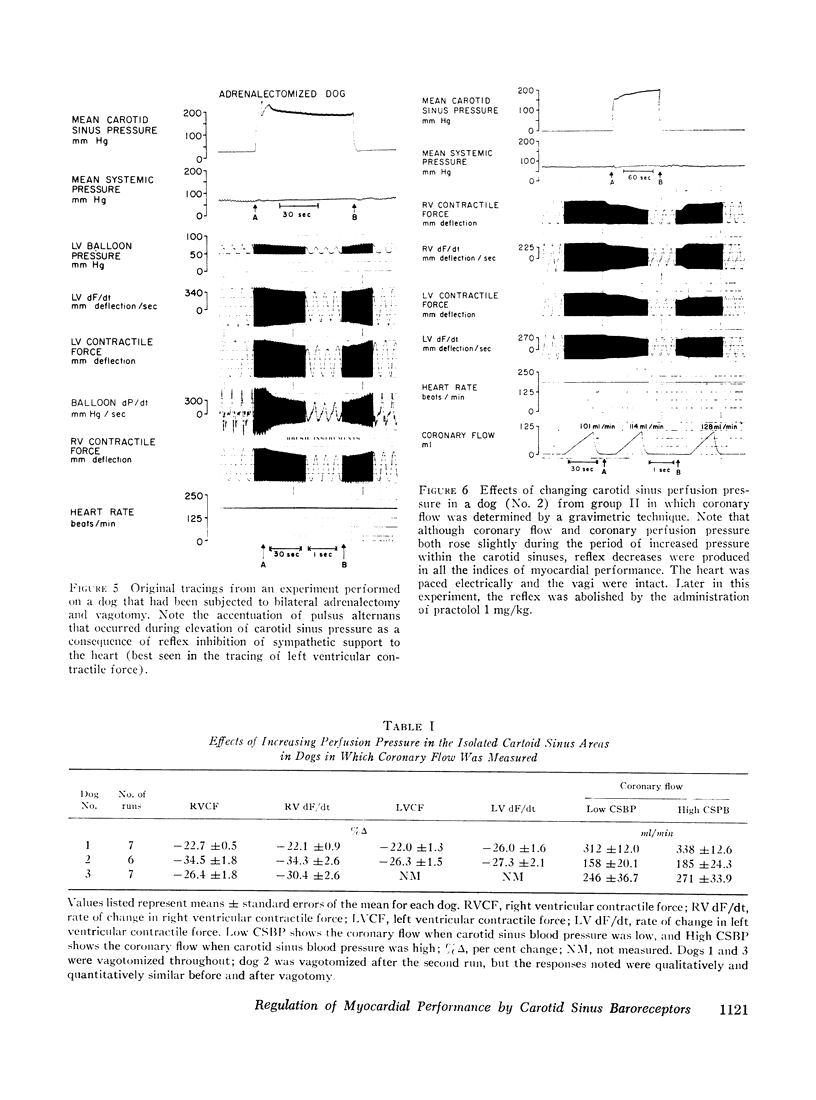
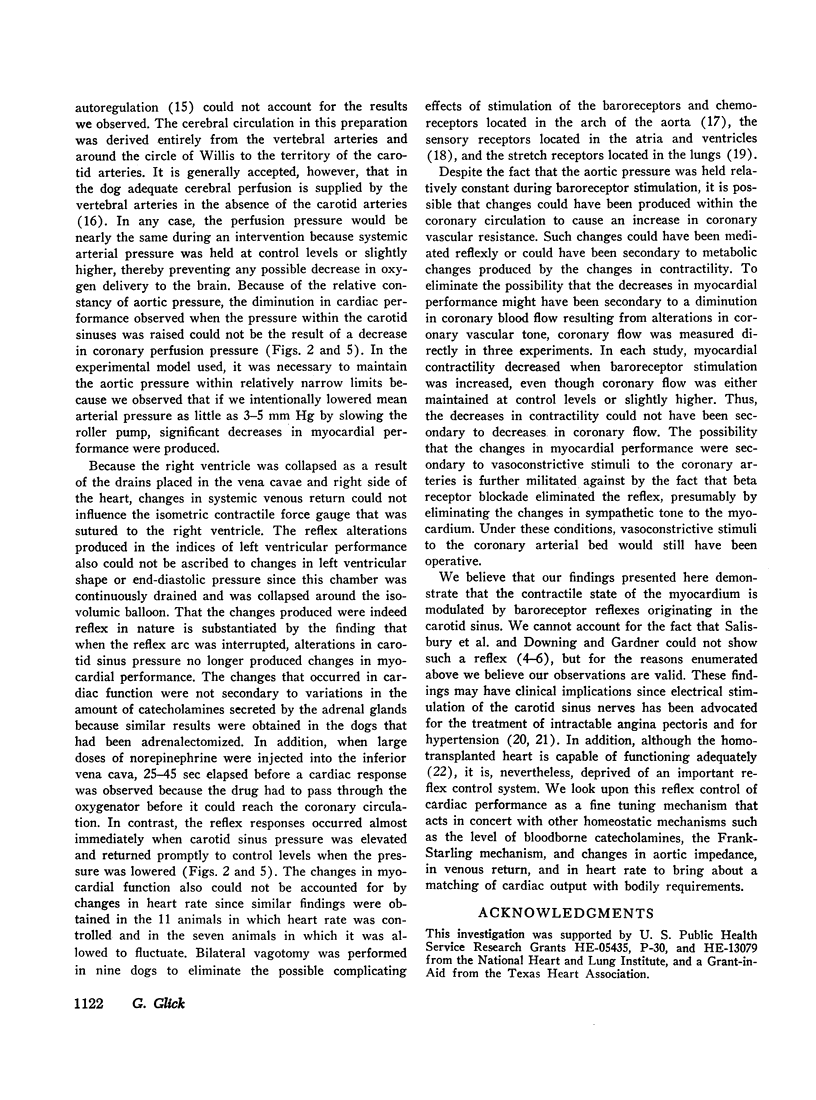
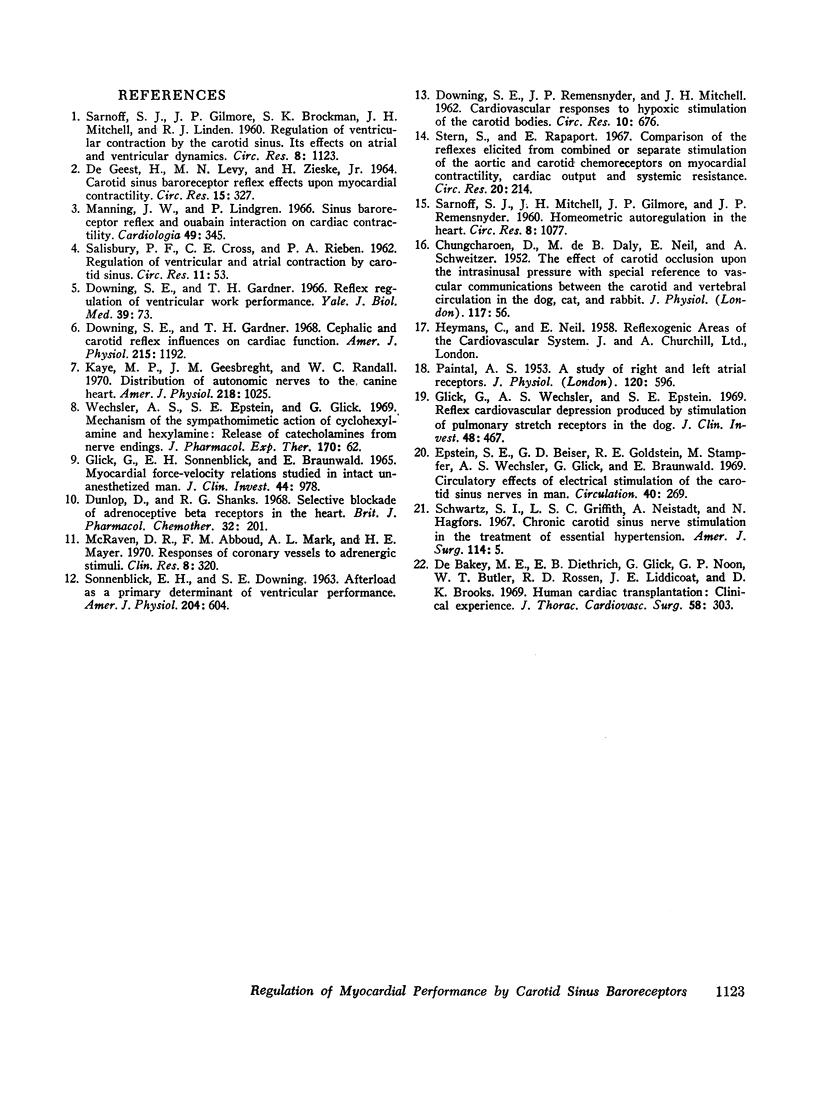
Selected References
These references are in PubMed. This may not be the complete list of references from this article.
- DEGEEST H., LEVY M. N., ZIESKE H., Jr CAROTID SINUS BARORECEPTOR REFLEX EFFECTS UPON MYOCARDIAL CONTRACTILITY. Circ Res. 1964 Oct;15:327–342. doi: 10.1161/01.res.15.4.327. [DOI] [PubMed] [Google Scholar]
- DOWNING S. E., REMENSNYDER J. P., MITCHELL J. H. Cardiovascular responses to hypoxic stimulation of the carotid bodies. Circ Res. 1962 Apr;10:676–685. doi: 10.1161/01.res.10.4.676. [DOI] [PubMed] [Google Scholar]
- De Bakey M. E., Diethrich E. B., Glick G., Noon G. P., Butler W. T., Rossen R. D., Liddicoat J. E., Brooks D. K. Human cardiac transplantation: clinical experience. J Thorac Cardiovasc Surg. 1969 Sep;58(3):303–317. [PubMed] [Google Scholar]
- Downing S. E., Gardner T. H. Cephalic and carotid reflex influences on cardiac function. Am J Physiol. 1968 Nov;215(5):1192–1199. doi: 10.1152/ajplegacy.1968.215.5.1192. [DOI] [PubMed] [Google Scholar]
- Downing S. E., Gardner T. H. Reflex regulation of ventricular work performance. Yale J Biol Med. 1966 Oct;39(2):73–89. [PMC free article] [PubMed] [Google Scholar]
- Dunlop D., Shanks R. G. Selective blockade of adrenoceptive beta receptors in the heart. Br J Pharmacol Chemother. 1968 Jan;32(1):201–218. doi: 10.1111/j.1476-5381.1968.tb00444.x. [DOI] [PMC free article] [PubMed] [Google Scholar]
- Epstein S. E., Beiser G. D., Goldstein R. E., Stampfer M., Wechsler A. S., Glick G., Braunwald E. Circulatory effects of electrical stimulation of the carotid sinus nerves in man. Circulation. 1969 Sep;40(3):269–276. doi: 10.1161/01.cir.40.3.269. [DOI] [PubMed] [Google Scholar]
- GLICK G., SONNENBLICK E. H., BRAUNWALD E. MYOCARDIAL FORCE-VELOCITY RELATIONS STUDIED IN INTACT UNANESTHETIZED MAN. J Clin Invest. 1965 Jun;44:978–988. doi: 10.1172/JCI105215. [DOI] [PMC free article] [PubMed] [Google Scholar]
- Glick G., Wechsler A. S., Epstein S. E. Reflex cardiovascular depression produced by stimulation of pulmonary stretch receptors in the dog. J Clin Invest. 1969 Mar;48(3):467–473. doi: 10.1172/JCI106004. [DOI] [PMC free article] [PubMed] [Google Scholar]
- Kaye M. P., Geesbreght J. M., Randall W. C. Distribution of autonomic nerves to the canine heart. Am J Physiol. 1970 Apr;218(4):1025–1029. doi: 10.1152/ajplegacy.1970.218.4.1025. [DOI] [PubMed] [Google Scholar]
- Manning J. W., Lindgren P. Sinus baroceptor reflex and ouabain interaction on cardiac contractility. Cardiologia. 1966;49(6):345–358. doi: 10.1159/000168942. [DOI] [PubMed] [Google Scholar]
- PAINTAL A. S. A study of right and left atrial receptors. J Physiol. 1953 Jun 29;120(4):596–610. doi: 10.1113/jphysiol.1953.sp004920. [DOI] [PMC free article] [PubMed] [Google Scholar]
- SALISBURY P. F., CROSS C. E., RIEBEN P. A. Regulation of ventricular and atrial contraction by carotid sinus. Circ Res. 1962 Jul;11:53–62. [PubMed] [Google Scholar]
- SARNOFF S. J., GILMORE J. P., BROCKMAN S. K., MITCHELL J. H., LINDEN R. J. Regulation of ventricular contraction by the carotid sinus. Its effect on atrial and ventricular dynamics. Circ Res. 1960 Sep;8:1123–1136. doi: 10.1161/01.res.8.5.1123. [DOI] [PubMed] [Google Scholar]
- SARNOFF S. J., MITCHELL J. H., GILMORE J. P., REMENSNYDER J. P. Homeometric autoregulation in the heart. Circ Res. 1960 Sep;8:1077–1091. doi: 10.1161/01.res.8.5.1077. [DOI] [PubMed] [Google Scholar]
- SONNENBLICK E. H., DOWNING S. E. Afterload as a primary determinat of ventricular performance. Am J Physiol. 1963 Apr;204:604–610. doi: 10.1152/ajplegacy.1963.204.4.604. [DOI] [PubMed] [Google Scholar]
- Schwartz S. I., Griffith L. S., Neistadt A., Hagfors N. Chronic carotid sinus nerve stimulation in the treatment of essential hypertension. Am J Surg. 1967 Jul;114(1):5–15. doi: 10.1016/0002-9610(67)90034-7. [DOI] [PubMed] [Google Scholar]
- Stern S., Rapaport E. Comparison of the reflexes elicited from combined or separate stimulation of the aortic and carotid chemoreceptors on myocardial contractility, cardiac output and systemic resistance. Circ Res. 1967 Feb;20(2):214–227. doi: 10.1161/01.res.20.2.214. [DOI] [PubMed] [Google Scholar]
- Wechsler A. S., Epstein S. E., Glick G. Mechanism of the sympathomimetic action of cyclohexylamine and hexylamine: release of catecholamines from nerve endings. J Pharmacol Exp Ther. 1969 Nov;170(1):62–71. [PubMed] [Google Scholar]


